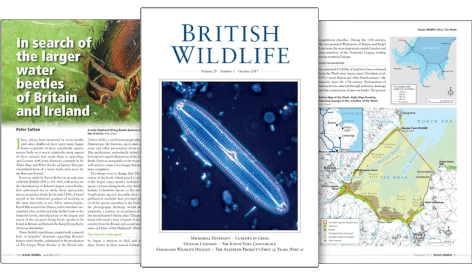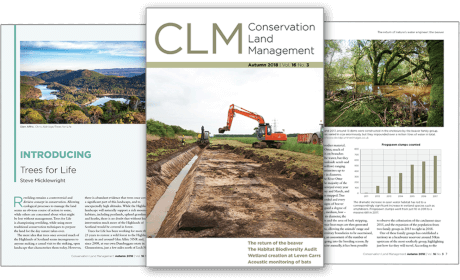About this book
Sand dunes are common aeolian landforms and are found on over ~40% of the Earth's land surface. The distribution and characteristics of sand dunes in the northern hemisphere are the major focus. Practical advice on how to deal with migrating dunes and a description of proven practices are presented. The application of recently available high-resolution satellite data for mapping and change detection and a summary of advances in techniques for characterizing the mineralogy of sand is explained. The target audience of this book will be those working in the fields of arid land studies, geoinformatics, social sciences, and landscape ecology.
Key features:
- Present a synthesis of past work, 'connect the dots' so that the work of physical geographers, geomorphologists, physicists and climatologists, hydrologists, and related fields can be made available within one book.
- Exhaustively reviews the key recent research on the typology, distribution, formation and current status of sand dunes.
- Provides a synoptic overview of the current problems and prospects for controlling migrating sand dunes that threaten infrastructure, and encroach on agricultural land and urban areas.
- Demonstrates the utility of new advanced monitoring techniques such as high-resolution satellite imagery and specialized laboratory equipment to study the mineralogy and structure of dune sands.
Contents
Part 1. Methodologies for the study and utilization of sand dunes
1. A review of the development in the remote sensing of sand dunes
2. A new approach for studying the occurrence and characteristics of coastal sand dunes, ofEgypt
3. Study of the seasonal evolution of unstable bordering sand dunes of South East Tunisia
4. Economic heavy metals in the coastal area between north of the Nile Delta
Part 2. Saharan Africa
5. Sand dunes on the south- eastern Sahara of Morocco: genesis, morphodynamic and socio-economic impact
6. Sand dunes and sand encroachment in Moroccan Sahara, current situation, threat and perspective
7. Characterization of sand dunes in the western Erg of the Algerian Sahara
8. Saharan Sand Dunes: Causes, Impacts and Remedies in the Sudan
Part 3. Middle East and Gulf Region
9. Beach build up, coastal aoelian sand incursions off the Nile littoral cell during the Holocene
10. Geomorphology and sustainable management for the sand dunes of Kuwait
11. Sand dunes: physical and chemical variations in Iraq and Kuwait
12. Barchan dunes in Egypt
Part 4. Middle East: Dune mobility
13. Sand dune migration as a factor of environmental risk on western desert of Egypt
14. Sand dune creeping and its consequence on cultivated land development projects and Protected Areas
15. Human and climate impacts on the mobility of sand dunes in Israel
16. Dust events and sand dunes in the major dessicated lake
17. Morphology and migration of sand dunes in Ladakh, India
Part 5. Dunes and dune systems in China
18. Commentary on China's extensive and unique dune systems: formation, evolution and forcing mechanism
19. Formation, evolution and forcing mechanisms of feather-like dunes inChina
20. Formation of the megadunes of the Badain Jaran
21. Formation, distribution and evolution on Gobi desert in China
22. Formation, distribution and evolution of sand dunes in China's Tibetan Plateau
23. Formation, distribution and evolution of sand dunes along China's coasts
Part 6. Dunes and dune systems in North Asia
24. Characteristics, dynamics and provenance of sand dunes in the inland rivers of China
25. High altitude Aeolian desertification and sand dunes on the Tibetan Plateau
26. Aeolian sand dunes in the permafrost zone of Russia
27. Dune massifs of Russia
28. The main geographical features and landforms of Uzbekistan's deserts
29. Dune Dynamics and human impact in Tottori sand dunes, and tectonically active area, Japan
Part 7. Dunes and dune systems of India's Thar desert
30. The Thar desert: an overview
31. Geomorphology and chronology of dunes in the Thar desert: a review of recent progress
32. Climatic implications of the late Pleistocene-Holocene dune dynamics in the southern desert margin
33. Late quaternary Paleo-environments of the Eastern margins of the Thar Desert, India
34. Geospatial diversity, geologic significance and evolutionary trends of parabolic dunes in the Thar Desert
Part 8. Coastal dune systems of the Indian sub-continent
35. The Coastal sand dunes along the western shores of India
36. Coastal sand dunes of south India
37. The aeolian deposits along the coastal zone of Sri Lanka
38. Characteristics of coastal dunes in Bangladesh: morphology and ecology
Part 9. Uniting Perspectives, Synthesis and Conclusions / Lu Qi, Mahesh K. Gaur and Victor R. Squires
Customer Reviews
Biography
Professor Lu Qi is Chief Scientist and Director of the Institute of Desertification Studies (IDS) in Beijing. The IDS is one of two such Institutes in the world. Dr Lu has a PhD in Ecology from the Chinese Academy of Sciences, Beijing and is a specialist in Dryland Sustainable Development; Integrated ecosystem management/Desert Ecology and Combating desertification and Land degradation. He is the recipient of several prestigious awards: Three National Awards on Scientific & Technological Progress (Second Class, 2006/2009/2010) PRC National Award on International Science & Technology Cooperation (as Chinese Partner), 2008; Ningxia Hui Autonomous Region Award on Scientific & Technological Progress (First Class), 2008; and UNDP Best Practices Award on indigenous technology in combating desertification and mitigating the effect of drought. Dr Lu is the author/editor of 20 books notably A Study of Kumtagh Desert (in Chinese). Beijing: Science Press, 2012; Desert Plants in China (Illustrated Handbook, in Chinese). Beijing: China Forestry Publishing House, 2012; Rangeland Degradation and Recovery in China’s Pastoral Lands, CABI, UK, 2009; Studies on Populus euphratica Forest in Ejina Oasis. Beijing: Science Press, 2009. Regional Review of UNCCD Implementation and Best Practices in Asia and the Pacific: Case Studies from Australia, China, Mongolia, Thailand and Viet Nam. Beijing: Chinese Environmental Science Press, 2005 and 180 papers (mostly in Chinese).
Dr Mahesh K. Gaur is an Indian, who is working at the ICAR-Central Arid Zone Research Institute, Jodhpur, India as a Principal Scientist, since September 2020. He worked as Senior Scientist from 2012 to 2020. He specializes in arid lands geography and the application of satellite remote sensing, GIS and digital image processing for natural resources mapping, management and assessment. He also researches drought, desertification, land degradation, indigenous knowledge systems, and the socio-economic milieu of the Thar Desert of India. Prior to this, he has worked as an Associate Professor for more than 13 years with the Department of Higher Education, Government of Rajasthan State, India and has also worked at Sandhan, Jaipur, IIM Ahmedabad, IHS Hyderabad and IN-RIMT in various capacities. He has also completed sponsored studies for ICAR, ISRO, SAC, UGC, and ICARDA. He has published 50 research papers in national and international research journals, 50 conference papers, 45 book chapters, five popular articles, and eight books. He is a member of a number of national and international scientific organizations, such as the Association of American Geographers and the Society for Conservation Biology, and several editorial boards of journals. He has been to South Africa, Namibia and Costa Rica on academic assignments. He is awarded the Citizen Karamveer Award 2011 by iCONGO for working in the field of Higher Education, Environment and Technology Applications for Community Upliftment; the Millennium Award for working in the field of Environment, and prestigious recognitions by the UGC of India and Scientific Assembly of the International Committee on Space Research (COSPAR).
Dr Victor R. Squires is a Distinguished Guest Professor at the Institute of Desertification Studies, Beijing. He is an Australian who as a young man studied animal husbandry and rangeland ecology. He has a PhD in Rangeland Science from Utah State University, USA. He is a former Foundation Dean of the Faculty of Natural Resource Management at the University of Adelaide, Australia where he worked for 15 years after a 22-year career in Australia’s CSIRO. He is the author/editor of 22 books on Drylands, Desertification, and Ecological Restoration from such publishers as CRC Press, Springer, Routledge and Kluwer Academic and numerous research papers and invited book chapters. Since retirement from the University of Adelaide, Dr Squires was a Visiting Fellow at the East-West Center, Hawaii, and an Adjunct Professor at the University of Arizona, Tucson and at the Gansu Agricultural University, Lanzhou, China. He has been a consultant to World Bank, Asian Development and various UN agencies in Africa, China, Central Asia and the Middle East. He was awarded the 2008 International Award and Gold Medal for International Science and Technology Cooperation by the Government of China and in 2011 was awarded the Friendship Award by the government of China. The Gold Medal is the highest award for foreigners. In 2015 Dr Squires was honoured by the Society for Range Management (USA) with an Outstanding Achievement Award. Dr Victor Squires was recognised in the 2021 Queen’s Birthday Honours with a member of the Order of Australia (AM), for services to ecology, especially rangelands.



































